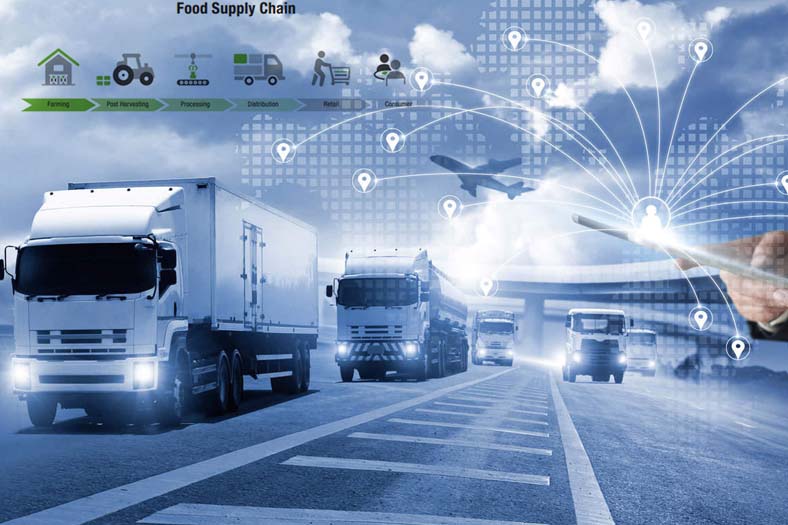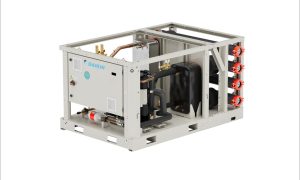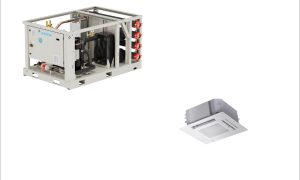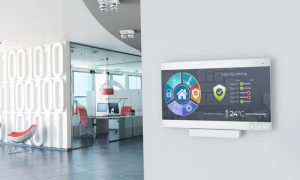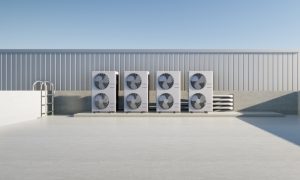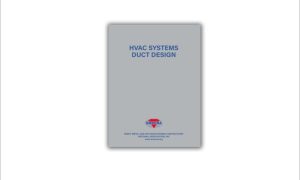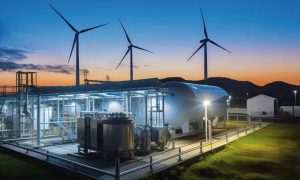Industry experts sharing their perspectives discussed untapped opportunities, technology, solar cold rooms, food retail and research initiatives.
Cold chain remains an integral part of any industry, whether its storage and transportation of fruits and vegetables, processed foods, dairy and ice cream, pharma and healthcare or hospitality. However, according to the recently published India Cooling Action Plan, while India has a large inventory of cold storages or refrigerated warehouses, the remaining elements of cold chain infrastructure like pack houses, reefer transport, and ripening chambers are largely missing. Thus, there’s a huge business potential in this industry.
For insights, Thermal Control Business Update conducted an interactive session on ‘Cold chain opportunities in the Covid Market’. The distinguished speakers – Vikram Murthy, Director, Univac Environment Systems., Harshal Surange, Director & CEO, ACR Project Consultants Pvt Ltd., Parth Thakkar, Director, Polfrost Aircon Pvt. Ltd., and Lokanadham Nagahari Krishna, Regional Head Hot Spots, Key Accounts, communication & Industry Affairs, Danfoss India who participated revealed challenges and opportunities and highlighted cold chain future and growth in coming times.
Digital technologies for evolving cold chain opportunities
Vikram answered specifically by picking one type of transportation, which is rail transportation, end-to end delivery of a container, a container is loaded at one end, and it reaches the other end in a fixed period of time. And we add to this many things on top of it, one is the price realisation has to occur, because it is delivered to a customer at the other end.
And so, you can pay before or pay later or pay through a process. The most important thing of course is the maintenance of that product, quality and temperature and so on. So, you can have continuous monitoring using digital sensors and tools and use artificial intelligence and the Internet to continuously give you the process parameters or the end-to-end things. The other important matter is, in all of this is the ability to be able to transport in time. So there has to be a process where you can book and you can load and move. And all of that has to be part of some integrated process. It’s not yet perfect, but the tools are there to make it good and railways are quite used to getting technology into their business as they do for passenger booking they can surely do it for this type of thing also.
Untapped opportunities in cold chain refrigeration industries and probable ideas
Responding to that Krishna remarked, that is probably the way forward that we have to look at when we are talking of reimagining the industry, because at the end of the day, it’s something that we can’t live without as refrigeration is increasingly becoming an aspect, which is part of our life, I mean, whether we can’t live without it, at the same time, it is also a sector which is contributing in different ways on climate change, because it definitely induces heat into the atmosphere, the refrigerants are chemical in nature.
So, as people who have been working in the industry, it is up to us to understand which are the places where we could look at it immediately, which are our low hanging fruits and which are the areas where we have to work on from a long term, medium term perspective. Now, in some areas, India is already a leader in terms of adopting natural refrigerants like if you look at some of the large cold storages that are available, India already uses 90 percent of our cold storage on ammonia, which is a natural reference. And it is important for us to continue in that direction, because ammonia is toxic in nature. And with urbanisation coming into play, there are issues coming that there are communities that have come around these large industrial refrigeration units and question marks being asked – is it safe to use ammonia, and that’s where you have these safety standards in place.
Secondly, there are some other options that are available. Like in the dairy sector, you have your bulk milk chillers, they all work. They’re all largely running on HFCs.
But that’s an area where industries and companies need to work together to understand what are the other options that are available. And they need not necessarily be only on the refrigerant aspect, because while refrigerants are one part of the solution that we could look at the other parts on energy consumption, how can you reduce the energy consumption? How can you combine renewable energy with energy storage, and that’s something that I am happy to say that we are working with some start-ups in that space. And these guys who are very young are coming up with some very simple solutions. So each of these I would say that we have to look at it and there are options that we will come forward with.
Research initiatives happening around the globe in terms of eco friendly cold chains
Krishna remarked, yes, in terms of research as Danfoss, we have kind of are working with research institutes in India. These are all leading research institutes and the recent one is with the Indian Institute of Science in Bangalore, where we are trying to work with them and understand what are the low GWP and natural refrigerants, options that we could look at both from a commercial refrigeration and industrial refrigeration point of view. And some of these are technologies which have worked well probably in climates like Europe and other climates, but India is unique in itself, in terms of India has five different climatic zones. And we need to understand how do we bring those technologies and sometimes probably do some reverse innovation, and work with a lot of stakeholders here, you know, because at the end of the day, you need an ecosystem in India, just having a technology in India will not help us to take it anywhere because the technology can be available.
But unless you don’t have your ecosystem here, which can work with the technology and take the technology into the market, the technology will continue to remain on the shelf. And to me, that is where societies like each ray are playing a very important role, you know, in getting all the stakeholders in and educating them doing a lot of skill building, bringing a lot of youth into the sector. And that to me is very critical. Because as we move forward in this industry, for business model innovation to happen, we will need a lot of young blood here a lot of start-ups will come in and we are already seeing a lot of investment coming in to start-ups who are who have started. That’s the direction I see moving forward where industry, private sector, the research institutes will all collaborate together and it will be a good PPP model.
Solar cold rooms in India and integration with refrigeration
Parth Thakkar stated, there are multiple points here, one being the success of solar cold rooms second being the opportunities of using low GWP Refrigerants and you know, both the points are quite individualistic. First of all solar cold rooms as a success in India is not dependent on one single farmer going in and buying that whole room, because he simply cannot have the capacity buying capacity on the capital to do so, you know, in a country where they are committing suicides, definitely not think of buying a cold room ever. So, that’s not where the Solar courtroom success lies, it lies in farmer producer.
Success of solar cold rooms going into the farm level, also depends on such investment coming into countries like India where the farmer is not a rich person, but he’s basically the provider and he himself has nothing. So, you know, that’s where the success of these kinds of cold rooms lies. And, as far as solar cold rooms In the industrial segment goes, industry is much capable of doing no investments into solar and combining that with the refrigeration Of course, you know, the solar power generation cannot alone handle the power requirement of the refrigeration, equipment that is put into the cold room, but then solar combined with thermal backup and solar combined, temperature preservation techniques can definitely give some load reduction or some you know, lesser dependency on the mains or the power grid. And in places, where cold storage is and blast freezers are installed in excess capacity and production is lesser, but they have huge facilities, there are rooftops, which are also able to generate a lot of solar and then feed into the grid based on the net metering practices which are allowed by the power discounts.
So, there are multiple opportunities as far as integrating solar goes with refrigeration and the second topic is low GWP Refrigerants. There are various ways and means of including low GWP Refrigerants into our processes.
Of course, the industry is not very aware, when I say industry, I mean, the consumer industry that’s using the refrigeration equipment, and today our focus is too much on Capex, as compared to Opex, compared to the low GWP effects of these refrigerants and until our mindset does not change from being a Capex oriented thinking to environment oriented thinking or to an Opex oriented thinking, there is no changing the ways and means of how the industry works.
Views on food retail concept from a technology perspective
Harshal said, see food retail in the sense if we’re talking about the supermarkets, then there is a significant amount of work happening in supermarkets where display cabinets are being, you know, various kinds of different display cabinets are available, frozen chilled. In fact, today we are coming to a case where many malls actually have these small cold rooms, which are inside the mall. So rather than a display cabinet, you actually just walk into a cold room. And over there you have those shelves where you go and pick up whatever you want. And so, to that extent, yes, there’s a lot of movement happening. There’s a lot of movement in the use of CO2 in these display cabinets as a refrigerant.
On a query by a delegate, Arup Majumdar put to Harshal that in European countries as well as in the US we see that food retail is very well developed in terms of the temperatures which are maintained for different food items, and they have a lot of AI and IoT devices also installed. So, a lot of technology has gone in. So how do you see expansion of the refrigeration concept to taking electronics into the application.
Replying to that Harshal remarked, see everything actually comes at a cost, right? In terms of technology we have everything with us, we are pretty much at par with the world. We have the technology but what it lacks is the will to spend on that technology, you are able to give the best of the best solutions. But when it comes to the actual ordering, that’s where you realise that oh, you know I don’t have so much budget, why don’t we do something a little lower than this and fit it within this budget. That is where we really need to move up as an industry and we need to realise that if we want the best then we need to be able to spend, of course when you spend for it, there is definitely a payback. It will definitely help you save power and it will definitely help you in getting the right life for your product. So the more you spend on this, it’s not going to be just a cost, it’s going to eventually pay back and going to give you a better, better life at the end of the day. But that kind of mindset really needs to come into the market today. And that’s what we feel really, really lacks in a lot of people. I’m not saying everybody, but in the majority of people that that we deal with, you know, we find this lack of buying mindset that, let’s do the best and get the result of it, that’s something that we need.
Talking about food retail, Krishna said, food retail is an important part of the business when we look at it, but it’s not can we compare it with US or a European market, the kind of sizes of food retail that are there in those markets is very different to the kind of food retail we have here. And when we look at food retail in Europe, what we talk of food retail, as a market, there is the future power station for that particular city or for that particular state, because we believe there, they will be able to produce so much energy, which they will not only be able to consume with the technology change that is happening, the cars that come in Parking, in a food retail, they will be able to use the energy being produced in the food retail to charge their electric cars to heat your homes. And that’s the way forward that you see and comparing that kind of a food retail market like India, at least at this point in time, we do not see that as a business case. But foot retail has a different opportunity in India.
Cold chain as an affordable solution for rural people
Krishna stated, it’s kind of the answer on a very high level from a macroeconomic point of view is quite easy because you have about 30 percent or 40 percent loss that is happening and let’s say you’re paying for 70 kg of apples today as against 90 or 95 kg of apples which will be available in the market. So, obviously, the price from the consumer will come down when there is a larger produce available at the architect and the farmer gets a higher price for because he is going to sell more at a macroeconomic level it becomes a very simple case saying that yes, it is. But when you get into a ground level there are different aspects that come into play, because there is a cost element that comes in added to the refrigeration and cold chain that comes into play.
Now, whether the rural people will be able to afford it here or the people in Himachal and Haryana, who are not getting income, because they were not able to sell this today have a larger income in their pocket. So, with that income they should be able to be willing to spend for what they are willing to buy. So, it’s an economic cycle that kind of connects. We should also look at developing technologies. Yes, kind of sustainable, which I think I have addressed, you know, in terms of sector integration, liveable, absolutely.
Parth added, as long as you have the consumer, the cold chain is affordable. Because when the food goes right into his pocket, I don’t think there is a problem in paying for the cold chain because it is giving you that quantity, or it is giving you that thing which you were not able to access before.
And at the same time, if you see people who say that cold chain is expensive, I don’t think they understand the use of cold chain fully. At the same time, if we say that we cannot afford cold chains, we are doing things wrong in the first place. Because the cold chain is supposed to add value and make you earn better and not be an additional cost. And it is making you save money somewhere or the other. But if you have the cost mindset where you don’t want to spend more on you, even if you’re going to save money in the long run, then we will never feel that the cold chain is not expensive or were too cold chain is the value addition to your supply chain.
Way forward
Harshal states that as an industry, we see that this industry has tremendous growth, it has been consistently growing for many decades now. And the growth continues, post Covid, definitely we have seen that there is a significant increase in the interest of people for getting into this industry. What needs to be really understood is that it is a business model, which is slightly different than the other industries. You know, it is a high capital intensive industry, you have to put in a lot of money, your turnovers are not so large, and they are going to be smaller turnovers. But once the project has paid for itself, and once the loan has been repaid off, then you really start earning. So there is a gestation period of five to seven years that needs to be given for this industry to really be in good shape.
There is also a tremendous opportunity that lies in having a cold chain facility for yourself, buying the product, processing its value addition and selling it end to end, if you’re able to manage the entire scheme. Or if you are an end to end solution provider, you have the maximum benefit, and you will definitely make a lot more money out of that stream.
Cookie Consent
We use cookies to personalize your experience. By continuing to visit this website you agree to our Terms & Conditions, Privacy Policy and Cookie Policy.

